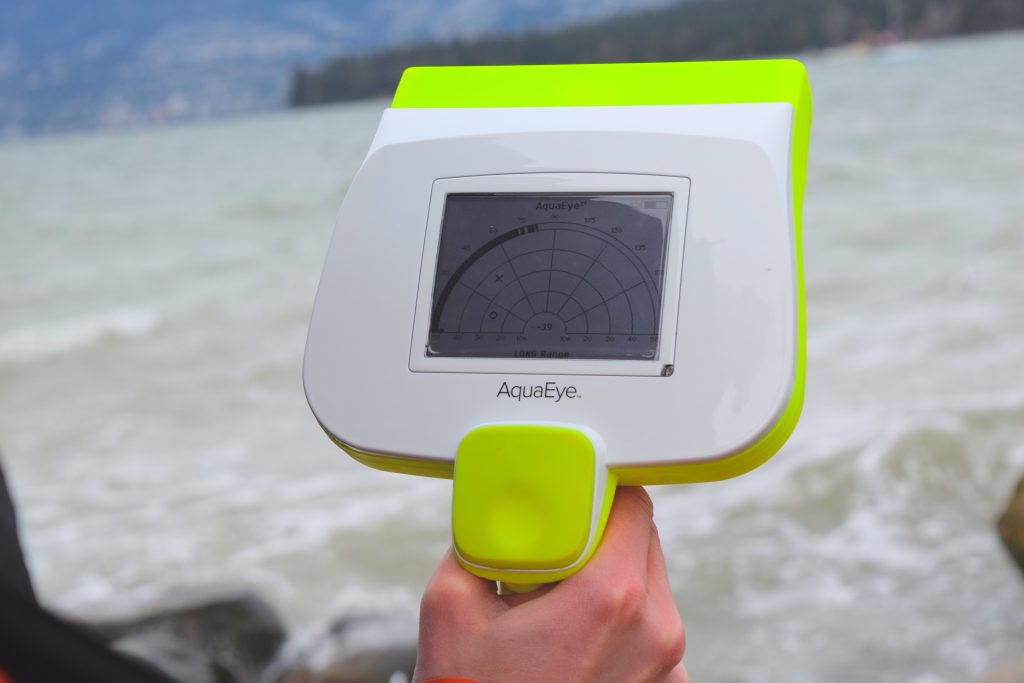
Headlines
News
New survey suggests majority of Canadians fall short on ice safety knowledge
February 24, 2021
By FFIC Staff
 The survey was conducted by VodaSafe, the water rescue and recovery technology company behind the world’s first hand-held scanning sonar device for water-based search and rescue, AquaEye. Photo credit: VodaSafe
The survey was conducted by VodaSafe, the water rescue and recovery technology company behind the world’s first hand-held scanning sonar device for water-based search and rescue, AquaEye. Photo credit: VodaSafe Feb. 24, 2021, Vancouver — New survey results show 72 per cent of Canadians do not know the minimum ice thickness considered safe. These figures represent a substantial gap in the knowledge and confidence of Canadians who partake in winter activities on frozen bodies of water.
The survey was conducted on behalf of VodaSafe, the water rescue and recovery technology company behind the world’s first hand-held scanning sonar device for water-based search and rescue, AquaEye. The results of their survey also showed Canadians plan to spend more time outdoors than previous years yet lack awareness of ice safety.
The survey shows that one in three Canadians (30 per cent) plan to spend more time outdoors this winter than in previous years, amid the ongoing COVID-19 pandemic and its resulting widespread travel and indoor gathering restrictions. As fluctuating temperatures have impacted this season across the country, police, fire, and search and rescue departments have been warning Canadians to be wary of unstable ice conditions before participating in activities like skating, hockey, snowmobiling, and ice fishing on frozen lakes and ponds.
“Sadly, we anticipate seeing ice related fatalities continue to trend upwards in Canada,” said Carlyn Loncaric, CEO of Vodasafe, in a news release. “Not only is greater education and awareness on the contributing factors and safety measures so critical, but we also need to ensure our regional police and fire departments are equipped with advanced technology that helps them respond quickly and efficiently to search and rescue calls.”
This is exacerbated by the education gap this survey showed as nearly three quarters (72 per cent) of Canadians do not know the minimum ice thickness for a frozen lake or pond to be safe enough to skate. At the same time, just over half (57 per cent) of people who participate in activities on frozen lakes or ponds feel confident determining whether it is safe or not. However, among this group, less than one third (29 per cent) correctly identified the minimum thickness to safely skate on a frozen lake or pond as at least 20 centimeters.
Other highlights from the survey include:
- 21 per cent of Canadians believe that dangerously thin ice (1-10 centimeters) is safe for skating.
- Manitobans (25 per cent) and Albertans (17 per cent) are more likely than the national average (11 per cent) to plan to spend more time on frozen lakes and ponds this winter than in previous years. These provinces are also more likely to report feeling secure in determining the safety of ice.
- Respondents ages 18-34 are the most likely to report they feel secure taking part in activities/sports on frozen lakes or ponds (76 per cent), despite research pointing to this age group as one of the highest-risk of ice fatalities and are more likely to engage in riskier behaviour.
Confidence levels vary among genders, with less than half of women who participate in activities on frozen lakes or ponds reporting that they feel confident in determining whether ice is safe (46 per cent), compared with 68 per cent of men.
About this Survey: This survey was conducted from February 10-12, 2021 among a representative sample of 1,520 online Canadians who are members of the Angus Reid Forum. The sample was balanced and weighted on age, gender, region and education. For comparison purposes only, the sample plan would carry a margin of error of +/- 2.5 percentage points, 19 times out of 20. Discrepancies in or between totals are due to rounding. The survey was offered in English and French.
Print this page
Advertisement
- Parksville council supports tax credit increase for volunteer firefighters
- One person taken to hospital after fire at Edmonton apartment building